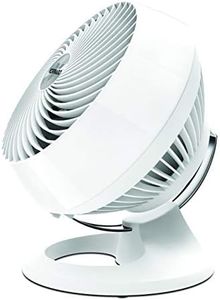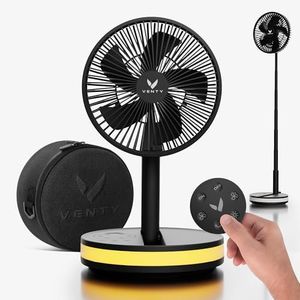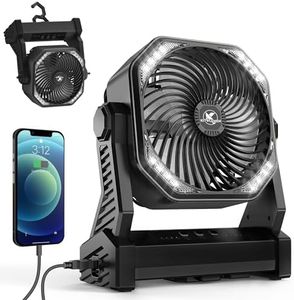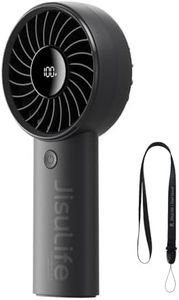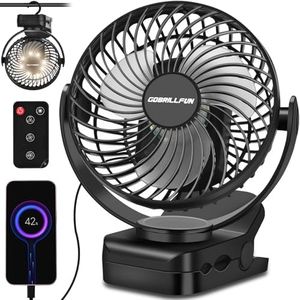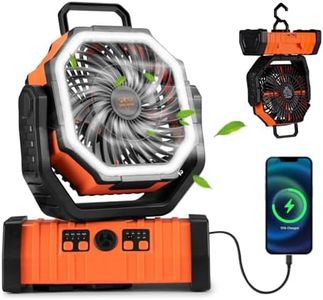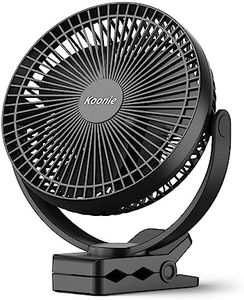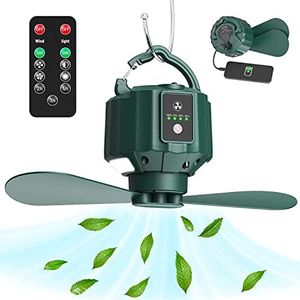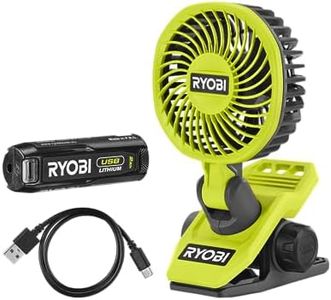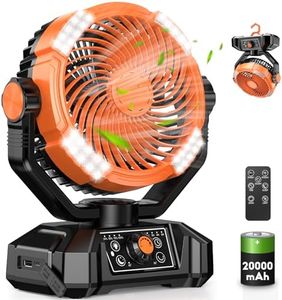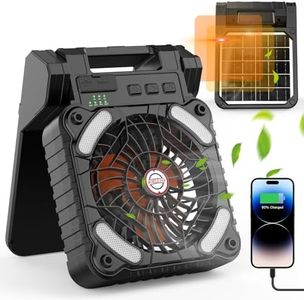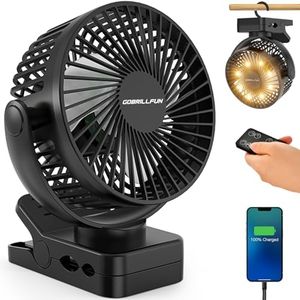We Use CookiesWe use cookies to enhance the security, performance,
functionality and for analytical and promotional activities. By continuing to browse this site you
are agreeing to our privacy policy
10 Best Camp Fans
From leading brands and best sellers available on the web.Buying Guide for the Best Camp Fans
Choosing the right camp fan can make a big difference in your outdoor experience, especially during warm weather. A good camp fan provides comfort by improving airflow and helping you stay cool in your tent or campsite. Before choosing one, consider where and how you plan to use it. Will you be backpacking and need something light, or are you camping close to your car and can handle a larger fan? Understanding your needs will help you narrow down the options to find the fan that suits you best.Size and WeightSize and weight determine how easy it is to carry and set up your camp fan. Smaller and lighter fans are ideal for backpackers or those who prioritize portability because they won’t add significant bulk to your gear. Heavier and bigger fans, while less convenient to carry long distances, can provide stronger airflow and are better suited for car camping. Think about your typical camping style and pick a fan whose size and weight won’t burden your trip.
Power SourceThe power source affects where and how long you can run your camp fan. Common options include batteries (disposable or rechargeable), USB-powered fans, or fans that can run on an AC adapter when outlets are available. Battery-powered fans are more flexible for remote locations but require spare batteries or a way to recharge. USB-powered fans are convenient if you often bring a power bank, while AC fans are best if you stick to developed campsites with electricity. Choose based on your destination and access to power.
Run TimeRun time tells you how long the fan can operate before needing new batteries or a recharge. Shorter run times (a few hours) might be enough for a quick cool down or for sleeping, while longer run times (a whole night or multiple nights) are better for extended comfort. Decide how many hours you typically need the fan to work, considering your sleep schedule or afternoon breaks, and pick a model whose run time matches your plans.
Airflow StrengthAirflow strength, often described as how powerful the fan is or sometimes measured in CFM (cubic feet per minute), determines how much cooling effect you feel. Weaker fans are good for small tents or as a gentle breeze, while stronger fans are needed for bigger tents or higher temperatures. Consider the size of your tent and the typical warmth of your camping environment—choose higher airflow for larger spaces or hotter climates, and gentler fans for small tents or mild weather.
Noise LevelNoise level is how loud the fan is when running. Quieter fans are important if you’re a light sleeper or want to enjoy peaceful nature sounds. Some people even like a steady hum for white noise. If nighttime silence matters to you, look for reviews or descriptions emphasizing low noise. If noise isn’t a big deal for your group or you like extra background sound, this factor is less crucial.
Mounting and PlacementHow and where you place your camp fan affects its effectiveness. Some fans can be hung from the tent ceiling, others sit on the floor, and some have flexible stands or clips for different placements. Ceiling-hanging fans cool the whole tent, while floor fans or clip-ons give spot cooling. Think about your tent’s design and how you like airflow; pick a mounting style that matches your preferences.
Extra FeaturesExtra features like built-in lights, timers, or adjustable speeds add to the convenience or versatility of a camp fan. Lights can save you from packing extra lanterns, while speed settings let you adjust airflow to comfort. Decide which extra features would be useful for your camping routine and pick accordingly, but remember that simplicity sometimes means fewer things that can go wrong.
